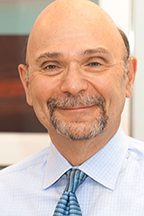 Health care expenses are among the largest and most difficult costs to estimate and control during retirement. Even those of us doing a good job saving, investing and estimating our retirement expenses may be underestimating the cost of our health care. In the years approaching retirement, it may seem that switching from a private health care plan to Medicare will result in big savings. However, HealthView Services’ 2015 Retirement Healthcare Data Report, drawing data from 50 million households, provides eye-popping projections of health care costs for people approaching or in retirement. The full report is available at www.hvsfinancial.com. Here are some key findings.
Health care expenses are among the largest and most difficult costs to estimate and control during retirement. Even those of us doing a good job saving, investing and estimating our retirement expenses may be underestimating the cost of our health care. In the years approaching retirement, it may seem that switching from a private health care plan to Medicare will result in big savings. However, HealthView Services’ 2015 Retirement Healthcare Data Report, drawing data from 50 million households, provides eye-popping projections of health care costs for people approaching or in retirement. The full report is available at www.hvsfinancial.com. Here are some key findings.
A healthy couple, both age 65, retiring this year and covered by Medicare Parts B (physician) , D (prescriptions) and a supplemental (Medigap) policy should expect an annual cost of about $7,000. This amount is expected to rise steadily — from $8,000 to $10,000 annually when the couple is in their 70s, and from $12,000 to $14,000 annually when the couple is in their 80s. The total cost from age 65 to 85 for this couple, is estimated to be about $267,000. Remember that Medicare, even with a supplemental Medigap insurance policy, does not cover all dental, vision, co-pays and other out-of-pocket costs. If these additional costs are included, the HealthView study estimates that a 65-year-old couple retiring in 2016 will have paid a total of nearly $400,000 for their healthcare by the time they reach age 85.
Some people assume that Social Security benefits will easily cover their Medicare costs with room to spare. This is unfortunately not the case. This year, the average Social Security benefit is about $1,341 per month, before deduction of the Medicare premiums. HealthView estimates that a 65-year-old couple retiring today will pay more than 40 percent of their Social Security benefits to cover Medicare when they reach their 70s and that will increase to more than 80 percent in their late 80s.
Even large expenses, like those estimated above, can be managed for individuals and couples who start planning before retirement and manage their expenses well over decades of retirement. A good goal for addressing these large expenses is trying to follow the financial services industry rule of thumb of saving 15 percent of income annually, including employer-matching contributions to company retirement plans. While a 15 percent savings rate is especially difficult for people in their 20s, 30s and 40s when there are many competing needs for housing, family and education goals, making some contributions in those years, even well short of 15 percent is important. The varying amounts saved each year can be enough if combined with 15 percent or more annual savings in a person’s peak earning years in their late 40s, 50s and 60s.
For people who haven’t saved enough for the lifestyle and spending levels they hoped for, finding the least painful ways to reduce spending will not be easy. They should make some lifestyle and/or financial planning changes as soon as they can. For help with understanding how these issues will impact your life and well- being, consult a trusted advisor.
Samuel Financial LLC is located at 858 Washington Street, Suite 202, Dedham, MA 02026 and can be reached at 781.461.6886. Securities and advisory services offered through Commonwealth Financial Network, member FINRA/SIPC, a registered investment advisor.